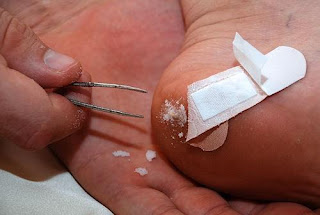Everyone it
seems, has an opinion when it comes to how best to raise children! Not that
that’s anything new. All throughout history ‘useful’ snippets of information
have come to light.
As early as
1684 it was recorded that John Locke, in his wisdom, thought that the best way
to increase the strength of a newborn baby was to put slices of steak on their
bottom and pour warm wine over their head!
The very first
comprehensive childcare manual was published in the UK in 1753 and ever since
it seems parents have been bombarded with advice on what’s right and wrong for
their baby. Long before the Treaty of Waitangi had even been signed, James
Nelson’s Essay on the Government of Children was full of the dos and don’ts of
raising a child in the 1700’s.
The advice in
the 1800’s wasn’t much better, with William Cobbett, proclaiming in 1829, the
importance of giving babies an hour-long, ice-cold bath every day, with the
mother singing the whole way through. Apparently to overpower the voice of the
child!
In 1861, the
famous Mrs Beeton instructed all breastfeeding mothers to down two pints of
stout a day and to strictly avoid "that delusion called
chicken-broth". Such a contrast from the ‘don’t drink when you’re
pregnant’ awareness campaigns we have these days.
Seems Pye
Henry Chavasse was a fan of an alcohol cure or two as well. The author of the
19th century's bestselling baby manual, The Young Wife's and Mother's Book, he
suggests that if a child was suffering from wind, a very small quantity of gin
might be the answer. Perhaps with ice and a slice of lemon?!
Parents of
small children didn’t escape from advice either with Mrs Frankenburg, in her
1922 book Common Sense in the Nursery, declaring that "infants should
hardly be indoors at all between 8 in the morning and 5 at night in the winter,
and from 7am to 10pm in the summer." So much for TV and video games!
On reflection,
all things considered, perhaps things aren’t so bad these days after all!




